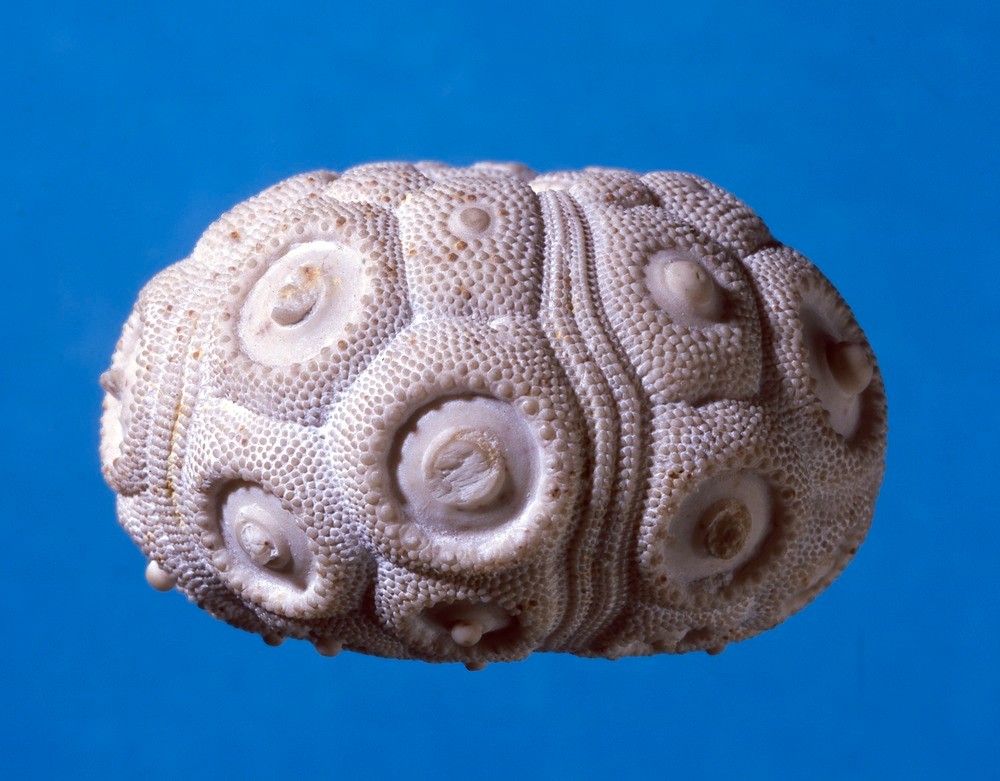| P number: | P550271 |
|---|---|
| Caption: | Temnocidaris (Stereocidaris) sceptifera, a fossil echinoid. |
| Description: | Temnocidaris is restricted to the Upper Cretaceous rocks (65-99 million years old) and is found in the chalks in several European countries. Temnocidaris (Stereocidaris) sceptifera has a spherical test, flattened top and bottom. One of the striking features of the species is the number of pores and grooves that cover its surface. It has narrow ambulacra radiating from the top of the test, picked out by shallow grooves with slit-like pores. The large plates between the ambulacra bear large nodes, to which tubercles were attached, surrounded by a circular groove and small tubercles to which secondary spines were attached. Large pores cover these plates. Echinoids (sea urchins) have lived in marine habitats since the Ordovician times, about 450 million years ago. They still live today, inhabiting many shallow, near shore seas around the world. As fossil echinoids resemble living species, we have an idea how they must have lived. They had spines which are used for protection. Some species protected themselves from carnivores by having poison-tipped spines while others had large, unpalatable solid spines. Echinoids burrowed into the sand or crawled over the sea floor on their tubed feet, which extended from the paired pores on the star-like or petal-like areas (the ambulacra). They grazed and scavenging algae and plants or ate small particles in the sandy substrate. |
| Photographer: | Unknown |
| Copyright statement: | Unknown |
| Orientation: | Landscape |
| Size: | 406.83 KB; 1000 x 781 pixels; 85 x 66 mm (print at 300 DPI); 265 x 207 mm (screen at 96 DPI); |
| Average Rating: | Not yet rated |
| Categories: | Best of BGS Images/ Fossils |
Reviews
There is currently no feedback

